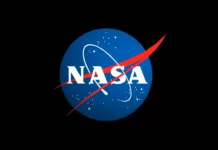Unveiling the Cosmic Secrets: New Insights from NASA’s James Webb Space Telescope
In a groundbreaking development, NASA’s James Webb Space Telescope has provided a captivating glimpse into the heart of our Milky Way galaxy, specifically the Sagittarius C stellar nursery. This discovery has opened new doors to understanding the complex processes of star formation and the influence of magnetic fields on interstellar gas and the stellar lifecycle.
The Enigma of Star Formation in the Galactic Core
Astrophysicist John Bally from the University of Colorado Boulder, a key figure in this research, highlighted a long-standing astronomical puzzle: the apparent scarcity of star formation in the Central Molecular Zone, despite the presence of dense gas and cosmic dust. Bally points out, "The core of our galaxy is teeming with dense gas and dust, the very materials from which stars are birthed. Yet, it has perplexed scientists why fewer stars are born here compared to other regions."
For the first time, the advanced near-infrared capabilities of the James Webb Space Telescope have allowed astronomers to peer through the thick clouds and examine young stars in this vibrant and congested region. These observations have uncovered that strong magnetic fields may be a significant factor in hindering star formation, even on a microscopic scale.
Pioneering Discoveries with Advanced Infrared Technology
Samuel Crowe, a senior undergraduate at the University of Virginia and a 2025 Rhodes Scholar, emphasizes the significance of the galactic center as a testing ground for star formation theories. He remarks, "The extreme conditions at the core of our galaxy offer a unique laboratory for testing our understanding of star formation. The infrared capabilities of the James Webb Space Telescope provide an unprecedented opportunity to expand upon previous observations made by ground-based telescopes, such as the Atacama Large Millimeter Array (ALMA) and MeerKAT."
Both Bally and Crowe have contributed to separate papers published in The Astrophysical Journal, detailing their findings from this research.
Unveiling the Formation of Massive Stars
The Sagittarius C region, with its brightest cluster, has been a focus of this study. Researchers have confirmed previous hints from ALMA about the formation of two massive stars in this cluster. By utilizing data from NASA’s retired Spitzer Space Telescope, the Stratospheric Observatory for Infrared Astronomy (SOFIA), and the Herschel Space Observatory, alongside the Webb telescope, scientists determined that each of these massive protostars is already more than 20 times the mass of our Sun. The Webb telescope also revealed the luminous outflows emanating from these protostars.
Finding low-mass protostars, which are still enshrouded in cosmic dust, poses a greater challenge. However, by cross-referencing Webb’s data with ALMA’s earlier observations, researchers have identified five promising low-mass protostar candidates.
Discovery of Shocked Hydrogen Gas and New Star-Forming Clouds
In addition to these findings, the research team identified 88 features indicative of shocked hydrogen gas. This phenomenon occurs when jets from young stars collide with the surrounding gas cloud. Analyzing these features led to the discovery of a new star-forming cloud, distinct from the primary Sagittarius C cloud, which hosts at least two protostars generating their own jets.
Crowe notes, "Although previous observations hinted at outflows from forming stars in Sagittarius C, this is the first time we’ve confirmed them using infrared light. This is crucial because there is still so much we don’t know about star formation, especially in such a unique environment as the Central Molecular Zone, which plays a vital role in the universe’s functioning."
The Role of Magnetic Fields in Star Formation
Webb’s 2023 image of Sagittarius C has unveiled dozens of unique filaments within a region of hot hydrogen plasma surrounding the main star-forming cloud. Through meticulous analysis, Bally and his team suggest that these filaments are sculpted by magnetic fields previously observed by ground-based observatories like ALMA and MeerKAT.
Bally explains, "The motion of gas under the extreme tidal forces exerted by the Milky Way’s supermassive black hole, Sagittarius A*, can stretch and amplify the surrounding magnetic fields. These fields, in turn, shape the plasma in Sagittarius C."
The research suggests that the magnetic forces at the galactic center are potent enough to prevent the plasma from dispersing, instead confining it into the concentrated filaments observed in the Webb image. These robust magnetic fields might also counteract the gravitational pull that typically causes dense clouds of gas and dust to collapse and form stars, explaining the unexpectedly low star formation rate in Sagittarius C.
Crowe adds, "Exploring the influence of strong magnetic fields on stellar ecology, both in our galaxy and others, is an exciting frontier for future research. This aspect has not been fully explored yet."
The Global Collaboration Behind Webb
The James Webb Space Telescope, a premier space science observatory, is a joint effort led by NASA in collaboration with the European Space Agency (ESA) and the Canadian Space Agency (CSA). Webb aims to unravel the mysteries of our solar system, examine distant worlds around other stars, and probe the universe’s enigmatic structures and origins, as well as our place within it.
Further Reading and Resources
For those interested in delving deeper into this groundbreaking research, the scientific papers led by Bally and Crowe can be accessed from The Astrophysical Journal. Additionally, the Space Telescope Science Institute provides a comprehensive collection of images and resources related to this discovery.
As we continue to explore the cosmos, the James Webb Space Telescope stands as a testament to human curiosity and the relentless pursuit of knowledge. The insights gained from this mission not only enhance our understanding of the universe but also inspire future generations of scientists and explorers. For more information and updates on the James Webb Space Telescope, visit NASA’s official website here.
For more Information, Refer to this article.


































